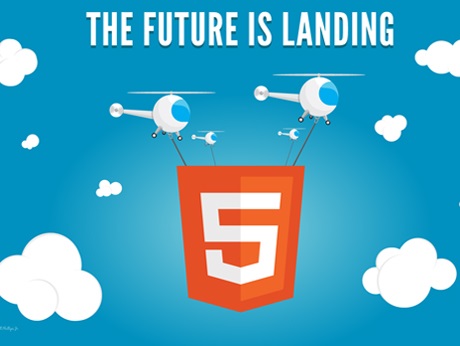
India will leapfrog to HTML5, say experts
--San Jose ( California, US) and Bangalore, October 30 2014: The World Wide Web Consortium (W3C) has published a Recommendation of HTML5, the fifth major revision of the format used to build Web pages and applications, and the cornerstone of the Open Web Platform. This means WeC has finally endorsed it as an official standard, even as the technology already is in use in browsers for nearly 2 years.
With today's publication of the Recommendation, software implementers benefit from Royalty-Free licensing commitments from over sixty companies underW3C's Patent Policy. Enabling implementers to use Web technology without payment of royalties is critical to making the Web a platform for innovation.
_______________________________________________________________________________________________________________________
So where is HTML5 eventually going to go? India!
"I think it's going to the developing world," Microsoft engineer and W3C HTML Working Group co-chair Paul Cotton told eWEEK. "If you look at the number of users and future users emerging in countries like China, India, and Russia, those are places where there are, in fact, a large number of untapped users, and they are just going to skip to HTML5 as quickly as they can.
_______________________________________________________________________________________________________________________
For application developers and industry, HTML5 represents a set of features that people will be able to rely on for years to come. HTML5 is now supported on a wide variety of devices, lowering the cost of creating rich applications to reach users everywhere.
"Today we think nothing of watching video and audio natively in the browser, and nothing of running a browser on a phone," said Tim Berners-Lee, W3C Director. "We expect to be able to share photos, shop, read the news, and look up information anywhere, on any device. Though they remain invisible to most users, HTML5 and the Open Web Platform are driving these growing user expectations."
HTML5 brings to the Web video and audio tracks without needing plugins; programmatic access to a resolution-dependent bitmap canvas, which is useful for rendering graphs, game graphics, or other visual images on the fly; native support for scalable vector graphics (SVG) and math (MathML); annotations important for East Asian typography (Ruby); features to enable accessibility of rich applications; and much more.
HTML5 is Widely Deployed
HTML5 has been in use for years. According to a 2014 Vision Mobile Survey, 42% of 10,000 developers surveyed are using the combination of HTML, CSS, and JavaScript for all or part of their mobile applications. Gartner identified HTML5 as one of their top 10 mobile technologies and capabilities for 2015 and 2016, saying HTML5 "will be an essential technology for organizations delivering applications across multiple platforms."
To help achieve the "write once, deploy anywhere" promise of HTML5 and the Open Web platform, during the 22 months since W3C announced the completed definition of HTML5, the W3C community has been adding to the HTML5 test suite, which includes over 100,000 tests and continues to grow.
The World Wide Web Consortium (W3C) is an international consortium where Member organizations, a full-time staff, and the public work together to develop Web standards. W3C primarily pursues its mission through the creation of Web standards and guidelines designed to ensure long-term growth for the Web. The Open Web Platform is a current major focus. Over 400 organizations are Members of the Consortium.